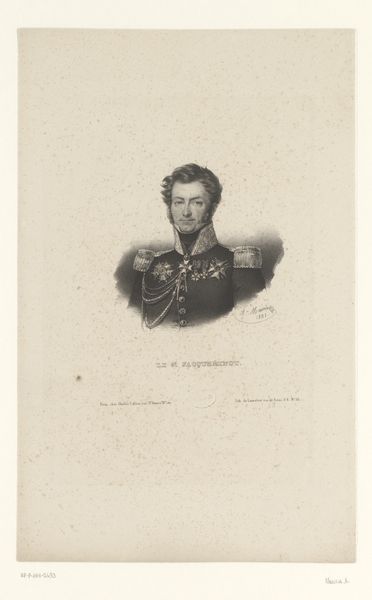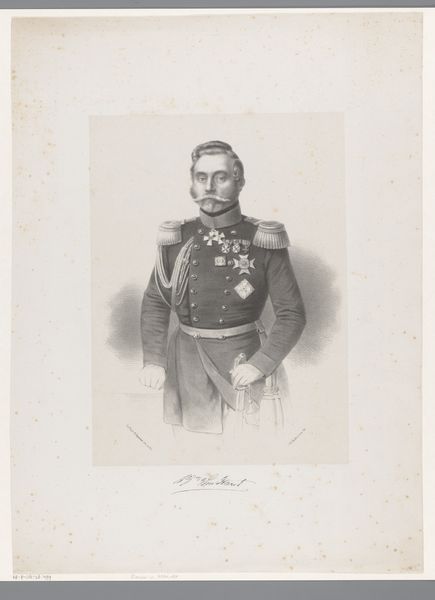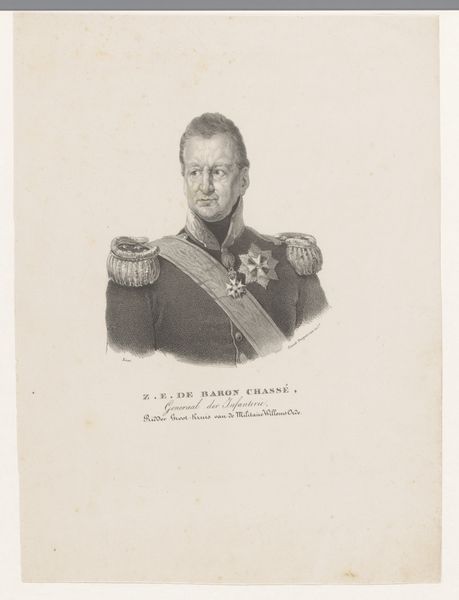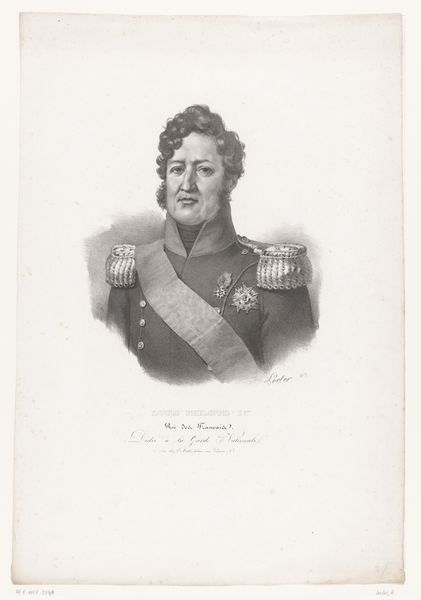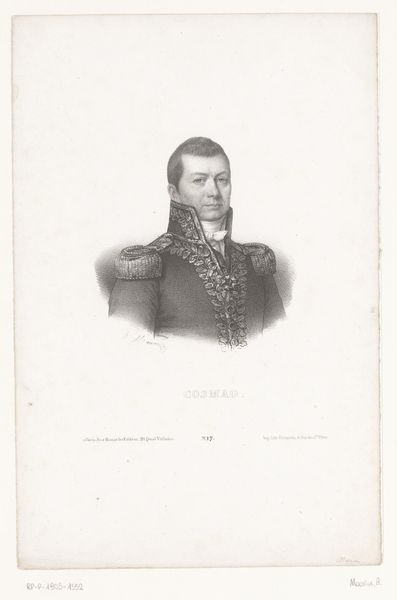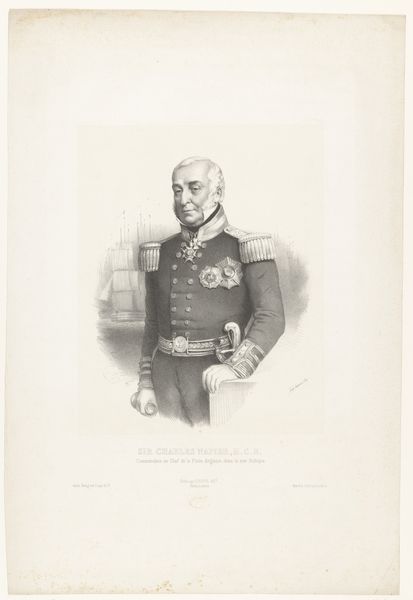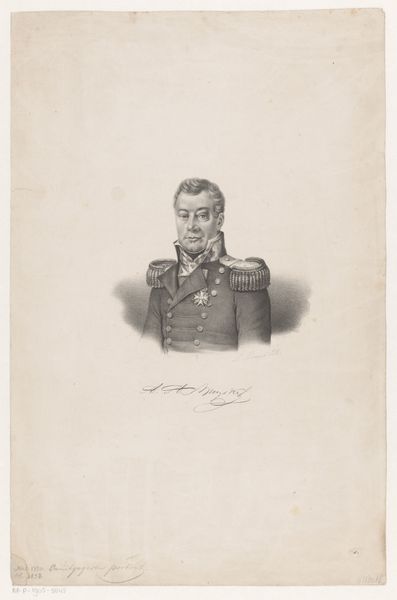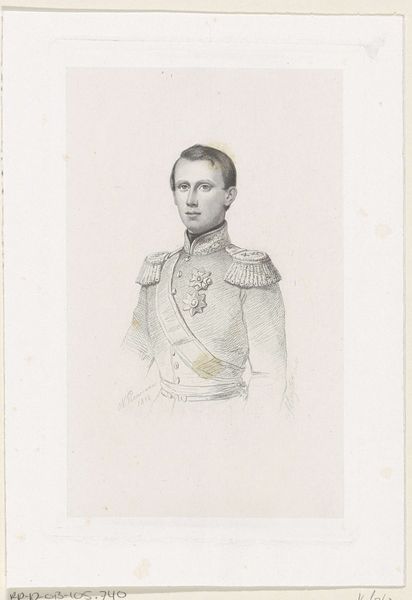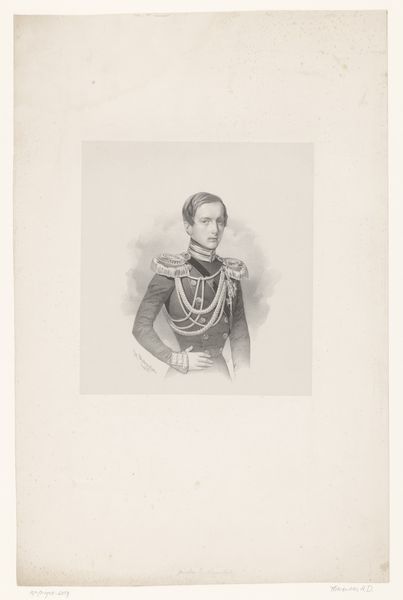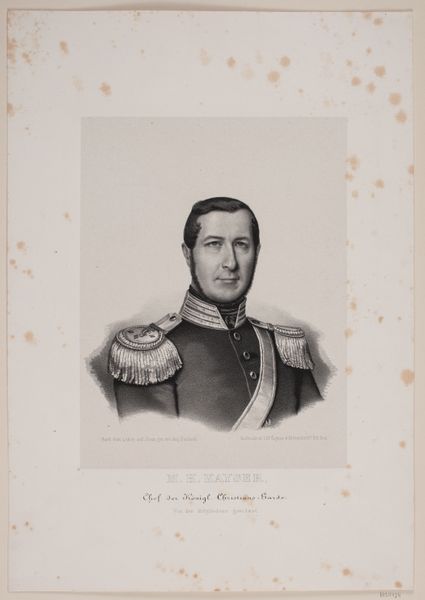
print, engraving
#
portrait
#
pencil drawn
# print
#
pencil sketch
#
pencil work
#
academic-art
#
engraving
#
realism
Dimensions: height 550 mm, width 368 mm
Copyright: Rijks Museum: Open Domain
Editor: This is Johan Hendrik Hoffmeister's "Portret van Constantijn Johan Wolterbeek," an engraving from around 1851-1883. It’s quite a formal portrait; all those medals make it feel a bit…distant, almost imposing. What do you see in it? Curator: The medals aren’t just ornamentation; they're potent symbols of power, achievement, and a specific social order. How do you think portraying individuals in positions of authority like this reinforces, or perhaps even challenges, the hierarchies of the time? Consider the legacy of colonialism embedded within those honors, what is legitimized and what is silenced here? Editor: That’s a great point. I hadn't really thought about the colonial implications of the medals themselves. So, looking at it again, it almost feels like a celebration of a system I'm now questioning. Curator: Exactly! And think about the realism movement happening then; this desire to capture subjects accurately was tied to broader shifts in society and the rise of the middle class. It makes me wonder, who was this portrait intended for, and what message was it trying to convey about the sitter’s role in that societal structure? Editor: I guess it was probably for other people within that same social circle, to affirm their values. What’s interesting is how a seemingly straightforward portrait can be a reflection of complex social power structures. Curator: Precisely! Recognizing art as inextricably linked from its social, political and cultural context enables a new lens of seeing that often challenges dominant narratives that prevail. It enables opportunities for critical engagement and allows art to challenge and question existing power structures, encouraging inclusive representations, and advocating for diverse voices. Editor: This really encourages a far more critical engagement with art, not just appreciating it for aesthetic value. Curator: Absolutely. And hopefully inspires a dedication to deconstructing those established power structures.
Comments
No comments
Be the first to comment and join the conversation on the ultimate creative platform.
